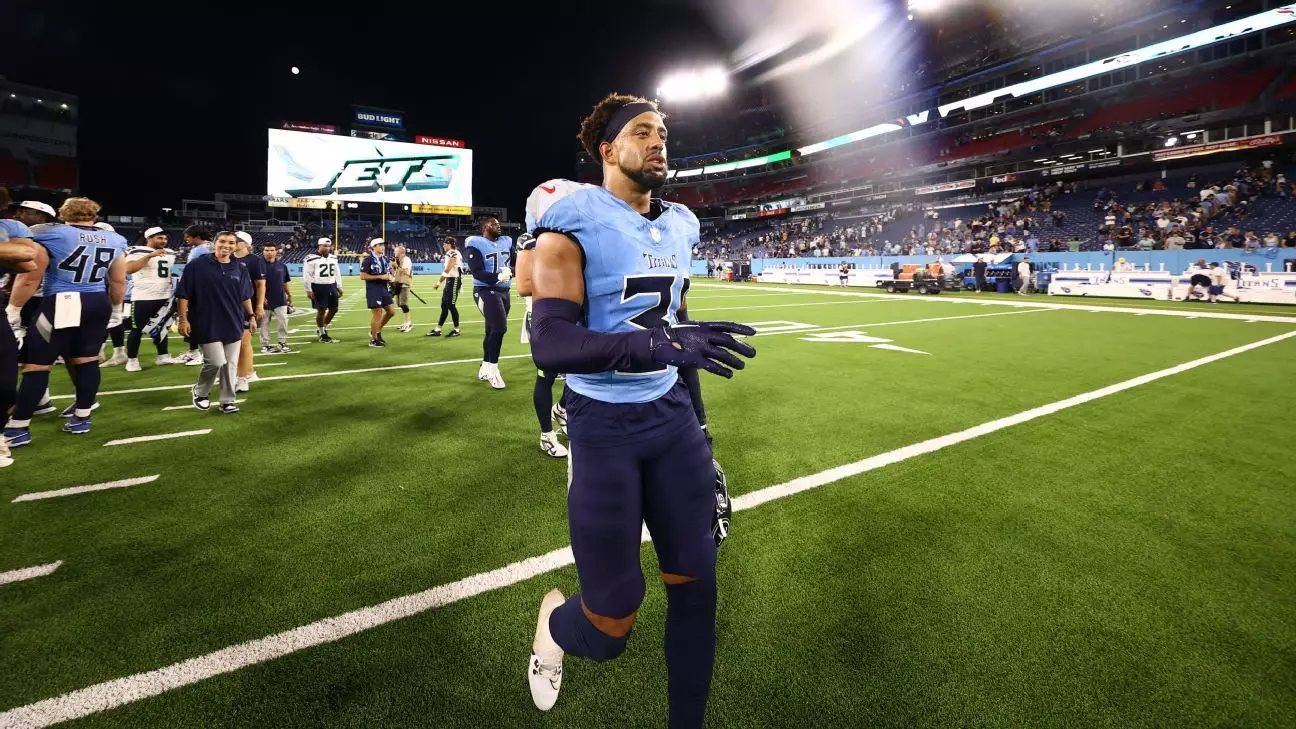In a surprising turn of events, the Tennessee Titans granted defensive back Jamal Adams’ request for release this past Thursday. Adams, a three-time Pro Bowler, had recently signed a one-year deal with the Titans following his departure from the Seattle Seahawks. His signing was initially viewed as a strategic acquisition that could bolster Tennessee’s secondary, especially with the familiarity he had with defensive coordinator Dennard Wilson, who was integral to Adams’ early career as his position coach when he was drafted sixth overall by the New York Jets in 2017.
Upon reflection, this release appears to stem from a combination of factors, most notably Adams’ limited performance on the field as well as issues surrounding his health. Despite the high expectations that accompanied his signing, Adams was only able to contribute minimally during his brief tenure in Nashville, recording a mere 20 snaps over three games. This paltry playing time raises questions about the synergy between player and team, highlighting the inherent risks involved when teams invest in veteran players coming off injuries.
The Challenge of Injuries and Integration
Adams’ health emerged as a significant barrier to his integration into the Titans’ defensive line-up. Reports suggest that he struggled with a persistent hip injury that plagued him throughout training camp, resulting in a lack of practice time and subsequently diminishing his opportunities to showcase his skills. Ultimately, the Titans placed him on the non-football injury list, a move that further complicated his situation.
From Adams’ perspective, the frustration was palpable. He emphasized that his desire for more playing time was not borne out of a need for a starting position, but rather a yearning to actively contribute and make an impact on the field. This sentiment strikes at the heart of a common struggle many players face following injuries: the balance between physical readiness and the psychological challenges that can accompany diminished roles.
The Path Forward
In light of these developments, both Adams and the Titans now look toward an uncertain future. Coach Dennard Wilson conveyed his best wishes to Adams, illustrating a sentiment that is often characteristic of the league—acknowledging that sometimes circumstances don’t pan out as expected. For Adams, the hope is that this release will serve as a fresh start. He has expressed confidence in his health and readiness to contribute, signaling his ambition to find a new team capable of harnessing his talents.
As both parties move in their respective directions, the broader implications of Adams’ release echo within the organization. The Titans must reassess their defensive strategies, potentially redefining their approach to player acquisitions, especially when it comes to veterans with injury histories. For Adams, this chapter serves as a reflective moment, prompting both a reassessment of his journey and an optimistic outlook for future opportunities.
This narrative is not just about a player losing a team—it’s about the ever-evolving landscape of the NFL, where every decision can ripple through careers and strategies alike.

Leave a Reply